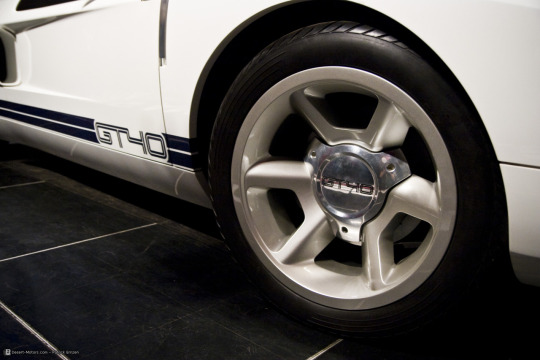#Ford GT40 Concept
Text

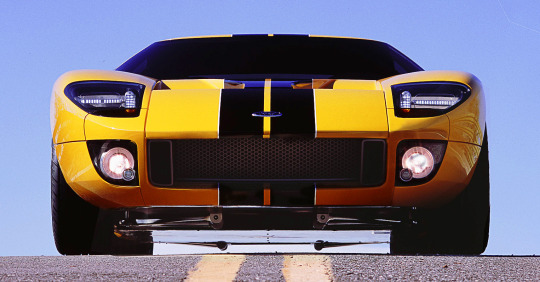
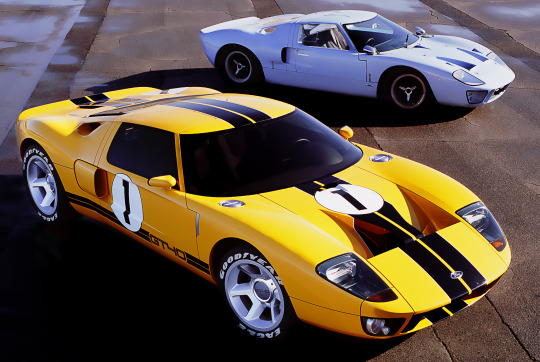
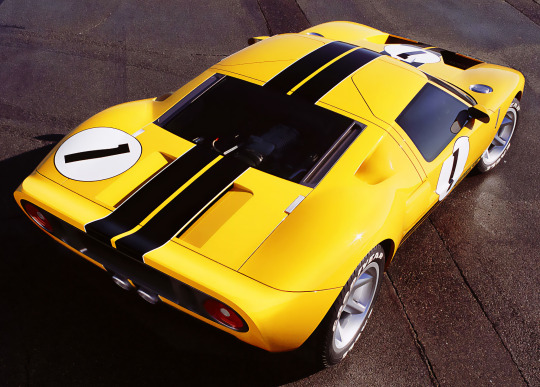
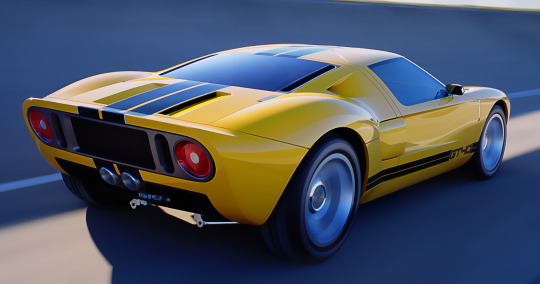
Ford GT40 Concept, 2002. A prototype for the Ford GT road car that referenced the GT40 race car, a consecutive 4-time winner of the 24 Hours of Le Mans (1966–1969), including a 1-2-3 finish in 1966.
#Ford#Ford GT40#Ford GT40 Concept#concept#prototype#design study#retro style#mid-engine#sports car#2002
662 notes
·
View notes
Link
1968 Bizzarrini Manta by ItalDesign #StoryCars #ConceptCars #ConceptCar
0 notes
Text
Lambo Kits (kitcarlist.com)
Kit Car List
Add to List
Links
Contact
Lambo Kits & Replicas
Lamborghini Kitcars and Replicas
The Kit Car List of Lamborghini Countach, Diablo, Murcielago and Gallardo kits, bodies, replicas and turnkeys available for sale today. Also check for more exotic Lamborghini kitcars and replicas.
The Car Factory 4445 Micco Road Micco, Florida 32976 (321) 431-8120 www.mtvconcepts.com El Toro Countach and El Demone Diablo kits start at $8,000 Turnkey El Demone built on a Boxster chassis starts at $75,000 Porsche Carrera GT kits $6,500; Turnkey $40,000 + your Boxster Lamborghini Murcielago Spider coming soon $55,000 + your Boxter Best Kit Cars Alexander Stamboliisky 107 Plovdiv, 4000 Bulgaria 00359878580908 www.bestkitcars.com Builder of Murcielago/Reventon/Diablo/Aventador/F355/F360/F430/ Cobra/Aston Martin/Bentley turnkey replicas. DNR Replicars, Inc. 562 Riverside Drive Ashville, NC 28801 (828) 713-3303 www.2000kits.com Manufacturer of the Python 2000 Diablo, and Diablo Roadster Lamborghini replica kits. They also manufacture a Ford GT40 replica. EuroWorks Exotics LLC 3771 Eileen Rd. Dayton, OH 45429 (937) 293-6834 www.euroworksexotics.com Manufactures Fiero-based Mirage Lamborghini kits and innovator of the first non-stretch Fiero-based Lamborghini, the Mirage X Diablo kit $9,995–$12,995, Mirage K Countach kit $4,995–$9,995 and Mirage S Countach kit $7,995–$9,995 Extreme Cars 28 Kingston Industrial Estate Ropery Street Kingston Upon Hull HU3 2BU United Kingdom + 0162 526 5714 Extreme USA Distributors: (919) 957-2828 (NC) (212) 537-6959 (NY) www.extreme-sportscars.com Manufactures Ferrari F355 for Toyota MR2, Modena 360 for Peugeot 406, Ferrari 430, and Lamborghini Murcielago replicas Fiero Fiberglass 1804 49th Street East Palmetto, FL 34221 (941) 920-5325 www.fierofiberglass.com Manufactures the Lizardo, a Lamborghini Gallardo inspired kit and turnkey based on the Pontiac Fiero Parallel Designs Liongate Enterprise Park Morden Road Unit 9 Mitcham, Surrey CR4 4PH England 0044(0)7425 131 677 www.paralleldesigns.co.uk Manufactures Lamborghini Miura, Countach and Diablo replica kits and turnkeys Stickland Racing, Inc. 9049 Stillwater Trail Fort Worth, TX 76118 (940) 781-5455 www.strickland-racing.com Lamborghini Countach bodies with tube-frame chasssis for reliable high performance race cars, exotics and all other mid-engine cars. World Auto Exotics, LLC 1288 Glen Road West Palm Beach, Florida 33406 (561) 301-2369 www.worldautoexotics.com Builds Porsche 962, GT1, Carrera GT, 993, 959, 964 (C2, C4 wide) & 356; Lamborghini Diablo SE & VT coupe, roadster & Murcielago based on the Boxter, Rolls Royce Centurion based on the Phantom, and the Rolls Royce Centurion based on the Silver Spur, Spirit, Mulsanne, Turbo, Bentley 8, and Silver Dawn, Jaguar to Vantage S, and electric car conversions for these and other cars. Search for more lambo car kits and bodies. Search The Web:
Kit Car List | Search | Add/Update a Listing | Contact | Links
Inclusion on KitCarList™ is not a referral, recommendation or endorsement of any kind.
Exercise extensive due diligence before doing any business with manufacturers, builders and dealers.
KitCarList™ is a Trademark of Internet Co., N.A. © Copyright Internet Co., N.A., All Rights Reserved
this is a llist of the cars not the kit car, ok he added it. thse companies turn older ferrari and lotu porches adn more into modern versions withing few years. all want them. similar concept.
but we wei staart with plantons and for regular cars.
and the rear hatch too, it is your trunk. keep the glass. it is a remarkable idea and conquers that issue. anad yeh we match all paints. and all are plantons
we added detail to it. we use it all the exterior matches the look fully, and for your model the panels you attach are fitted. filled yes and are permanent. honeycomb metal. and only about an inch mostly thick. offers streanth and bullet resistance. most are a nine wen done. kits are used for most supercars today. and most sedans can accept them. we recomed models for certin brands due to wheel base speed width. interior kits are plant on too. the adhesive is permanent. is an epoxy.. the skin sticking matches perfectly.. hold it no for a minute ok. a nd it is there foerver. lights turn signals and more included and lenses. and the kit is ccomplete. add for engine enhancement. a kia sport the one lori had convert it to a ferrari, it can go to sizty i three seconds still, and a quarter in seven still, bu t top speed is three ieghty. or better speed kit it is faster to start by seconds each and top speed of 480.
and the kits are not pricey only 8 grand. or so. and include tiers and rims. most will be about twenty but are worth it. and most cannot tell until they look close
Thor Freya
Olympus
i want mine now. and most people can convert it in one weekend. all the parts are included and it is a kit. most stick on. and stay on at speed and weather and cold and more. hard stuff too. stronger than your panels makes speed possible
Hera
0 notes
Text
SECRETS TO 6 AND 12 CYLINDER HEADER DESIGN
Hope you are enjoying these articles on exhaust header design. Building headers from mandrel-bent stainless tubing using proper fabrication techniques is important, but proper header design is crucial. Last month, we considered 180 degree exhaust headers for V-8s. As discussed, the 180 degree concept was developed to help even out the exhaust pulses from an uneven firing 90 degree crank V-8 in order to broaden the engine power band. The concept was very successful as illustrated by the Ford GT40 racecars of the 60’s. This month, I’d like to focus on exhaust headers on V-12 and six cylinder engines.
It should be noted that six-cylinder and 12-cylinder engines are inherently balanced and even firing. That is, for an inline-six (I-6) cylinder engine, the firing order is such that cylinders fire alternating between the front 3 and rear three cylinders with a separation of 120 degrees (720/6). The cylinders of a V-6, engine, typically arranged in a 60 degree “V”, fire in an alternating fashion between banks also with 120 degree separation. A V-12 is essentially two I-6s (or two V-6s) joined together at the hip, with cylinders firing in an alternating fashion from bank-to-bank separated by 60 crank degrees (720/12). The melodical sound of a Ferrari V-12 is testimony to the even firing nature of these engines. Typically, I-6 exhausts are setup as two 3-1 headers. The front 3 cylinders are combined into one collector and the rear 3 into another. A V-6 engine normally has a 3-1 collected system on each bank. A V-12 typically has two such setups (4 x 3-1 headers). In many cases, the 3-1’s are combined into a final 2-1 resulting in a single exhaust pipe from each bank of 6 cylinders.
With this exhaust setup, the exhaust pulses into each 3-1 collector for all these combinations are separated by 240 crank degrees. The exhaust pulses are far apart and do not compete for flow area in the collector allowing for a relatively small collector outlet and resultant increased power band. Also, unlike the 180 degree configuration necessary on the 90 degree V-8s, the header packaging is straight forward.
It should be noted that some V-6 engines are considered “odd-fire” engines, most notably the Buick V-6 of the late 60s and 70s. Some of these engine designs have Offset-journal crankshaft been used in racing including the USAC, SCCA Trans Am and IMSA series during the 70s and early 80s. These engines have a 90 degree angle between banks, like a V-8. It has been rumored that these engines were derived from V-8 castings with two cylinders removed. One of the engine designs used a crank with three journals separated by 120 degrees. So, similar to what happens with a Harley V-twin, the cylinders fire at odd intervals. These became known in some circles as “shakers.” In this case, the cylinder firing-interval sequence is 90-150-90-150-90-150. In order to minimize the vibration of 90 degree V-angle, another design used an “offset-rod-journal” crank, resulting in a 108-132-108-132-108-132 sequence. This arrangement was smoother, but less reliable for racing due to the narrower journals required for the design.
Though these 90 degree V-6 arrangements required unique distributor arrangements and fuel injection sequences, it had little effect on the design of the exhaust. If you notice, the exhaust pulses firing into each collector is still 240 degrees. For example, for the common journal crank motor, bank 1 fires, then 90 degrees later, bank 2 fires and 150 degrees later, bank 1 fires again, resulting in 240 degrees between cylinder firing into each collector. (i.e. 90+150=240). Likewise, for the “offset-journal crank”, 108 + 132 = 240 degrees. Theoretically, if there was an X-pipe or Y-pipe used in this set-up, one might expect a “crowded condition” during the 90 degree firing separation. We have found in practice that the exhaust pulses appear to be “conditioned” passing through the first collector and having minimal effect at the X- or Y-pipe.
So now that we have explained that a V-12 engine is an even-fire engine and does not require crossing header tubes across the V-bank, get a load of this set of 180 degree headers on a V-12! Many years ago, Jack Burns developed and fabricated a set of 180 degree headers for a drag boat powered by a 396 cid Jaguar V-12 – essentially 3 x 4-1 headers. Ever curious, Jack wanted to see the effect of using a 180 degree firing separation on the performance of a V-12. The mounting of the engine in a circle-race boat made it an excellent candidate for this experiment as the header tubes could be taken over the top of the engine, above the intake stacks. This arrangement resulted in an odd arrangement of three megaphone collectors arranged over the top of the engine. The sound of the engine with the exhaust was described by some as sounding like the shriek of the legendary Matra V-12s Formula One cars of the 70s.
IMSA GTP Group 44 Jaguar. To say the least, this boat turned some heads at the races. In fact, Bob Tullius, of Group 44 fame, caught wind of what Jack was doing and asked to try the headers on their dyno. What they found was a substantial increase in both torque and horsepower over what they had been running on the Group 44 Factory Racing IMSA GTP Jaguars. Obviously, this exhaust arrangement would not package well in the road race cars. Jack however consulted with the Group 44 engineers to develop a more conventional 12-into-4 arrangement that was a significant improvement over their previous exhaust header design.
Returning to the Matra, one notices in this brilliant photo of a 1970 Matra MS11 F1 car that the French team had an even different idea in exhaust design. This 12-into-6 design explains the unique sound of the Matra. It combines the first and sixth, second and fifth and the third and fourth cylinders of each bank into 2-1 collectors resulting in three tailpipes per bank. Jack’s V-12 180’s went one step further and combined the cylinders across the banks into 4-1 collectors. It is therefore not surprising that the resultant acoustical signature of the two systems is similar.
Copyright 2010 - Burns Stainless LLC, Vincent Roman
#burnsstainless #vinceroman #rpmmag #rpmmagazine #v6headers
Read the full article
0 notes
Text
The Lotus Europa Twin Cam Special: The Car That Was *Almost* The Ford GT40
The Lotus Europa Twin Cam Special: The Car That Was *Almost* The Ford GT40
This is a Lotus Europa Twin Cam Special from 1974, interestingly the Europa concept started out in 1963 as a design for Ford who were in the midst of planning their GT40 campaign against Ferrari.
Ultimately it would be the Lola Mk6 that would win the bid, and Lola would develop the Ford GT40 in England as a result. Lotus then went on to further develop their Ron Hickman-designed GT40 proposal…

View On WordPress
1 note
·
View note
Text
Ford GT Next-Gen 2024 Concept, Colors, Release Date
Ford GT Next-Gen 2024 Concept, Colors, Release Date
Ford GT Next-Gen 2024 Concept, Colors, Release Date – Get together around $500,000 and find a way to get into a 2024 Ford GT lottery if you want to drive a race car that’s legal for road use. Its stunning exterior appearance is both a tribute to the legendary GT40 race vehicle that dominated Le Mans in the 1960s and a showcase for Ford’s superior design and engineering capabilities. There is a…

View On WordPress
#2024 ford gt#2024 ford gt availability#2024 ford gt carbon#2024 ford gt carbon series#2024 ford gt colors#2024 ford gt concept#2024 ford gt configurator#2024 ford gt cost#2024 ford gt dimensions#2024 ford gt electric#2024 ford gt supercar#2024 ford gt3#ford gt 2017#ford gt 2021#ford gt 2024#ford gt diecast#ford gt for sale#ford gt mustang#ford gt price#ford gt supercar#ford gt40#ford gt500
0 notes
Text




Ford Bearcat Prototype, 1967. A mid-engined supercar concept that would have capitalised on Ford's track success with the GT40. However the project was abandoned as Ford built a relationship with De Tomaso who were using Ford engines and whose mid-engined Pantera ended up being sold through Lincoln Mercury showrooms.
874 notes
·
View notes
Photo

The Exclusive Interview with Kurt Kahl of Kia Design Center America
#kia#kurt kahl#automotive design#design#cars#automobiles#kia stinger gt4#ford gt40 concept#concept cars#style#art
2 notes
·
View notes
Photo

Follow @wheelnutdotnet for more details about unknown and rare cars, check the details of the concept cars in description
1. Chrysler Atlantic Concept (1995)
The Chrysler Atlantic was a retro concept car created by Chrysler. It was first shown in 1995. The Atlantic was designed by Bob Hubbach and inspired by the Bugatti Atlantique. The idea for this car began out as a sketch on a napkin by Chrysler’s president Bob Lutz in early 1993 and also involved the automaker’s chief designer, Tom Gale.
2. Lamborghini Cala (1995)
The Lamborghini Calà (also known as the Italdesign Calà) was a concept car designed for Lamborghini by Italdesign Giugiaro. It was first shown at the 1995 Geneva Motor Show. The Jalpa would finally be replaced in 2003 by the Gallardo which used the principles of the Calà as an inspiration.
3. Alfa Romeo Scighera (1997)
The Alfa Romeo Scighera is a functional, futuristically styled concept car designed by Fabrizio Giugiaro and constructed by Italdesign of Turin, Italy in 1997. The name “Scighera” means mist in Milanese dialect. The Scighera is based on the 164, and has an all aluminium body, the frame structure is made of aluminium-carbon fibre composite, and powered by an Alfa Romeo 3.0 L (180 cu in) twin-turbocharged V6 engine.
4. Volkswagen W12 Syncro (1997)
In 1997, at the Tokyo Motor Show, Volkswagen debuted their first sports car concept, a bright yellow W12 Syncro (also known as the W12 Syncro Coupé) with a 5.6-litre W12 engine producing 309 kW (420 PS; 414 bhp) with Syncro four-wheel drive. This, and the W12 concepts after it, were all designed by the Italdesign firm in Italy.
5. Audi Rosemeyer Concept (2000)
The Audi Rosemeyer is a concept car built by Audi, shown initially at Autostadt and at various auto shows throughout Europe during 2000. It was names after Bernd Rosemeyer.
https://www.instagram.com/p/B_XNG5Np6PL/?igshid=1vjwvn2z3dko
#concept#conceptcar#conceptcars#lamborghini#lamborghinicala#gt40#chrysler#rosemeyer#ford#lanciastratos#dodge#quattro#alfaromeo#car#cars#supercars247#supercar#supercars#dreamcars#hypercar#audi#bmw#mercedesbenz#ferrari#bugatti#conceptart#volkswagen#facts#best#w12
2 notes
·
View notes
Photo

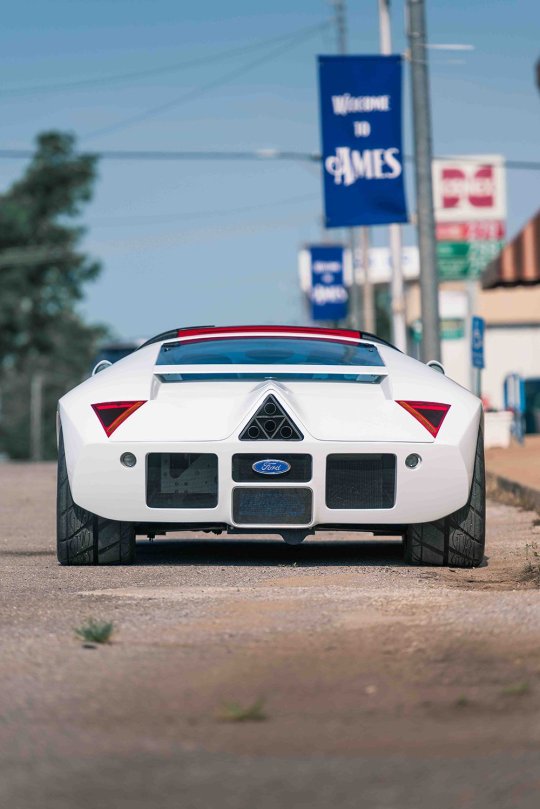



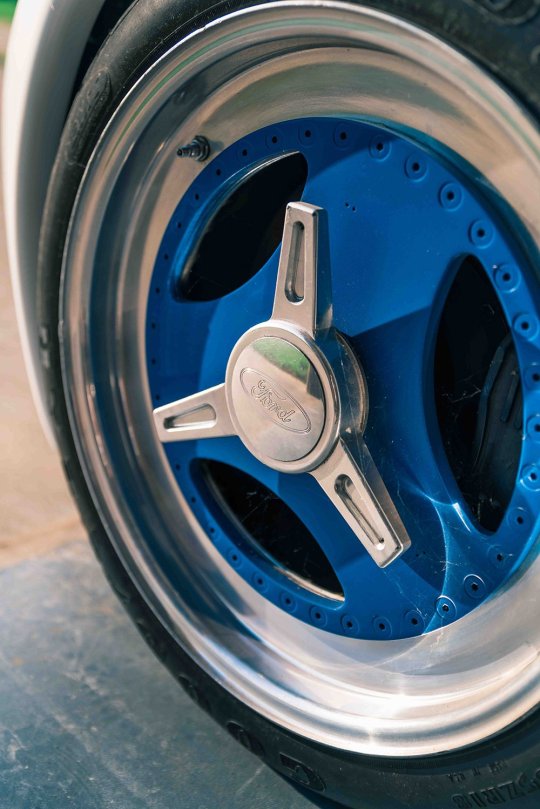




Ford GT90
First seen at the Detroit Auto Show in 1995, the GT90 took the essence of the legendary GT40 racer of the 1960s and catapulted it right into the 21st century. Showcasing the marque’s ‘New Edge’ design philosophy, it bristled with aerospace-derived technology that ranged from its honeycomb aluminium monocoque and carbon-fibre body panels to an engine bay lined with Space-Shuttle-like heat-absorbing ceramic plates. And not only did it look more sci-fi jet fighter than the Bugatti Veyron of a decade later, it could match itsperformance, too. With its 5.9-litre, 48-valve V12 force-fed by a quartet of turbochargers, the GT90 offered 720hp at a screaming 6,300rpm and could cover the quarter-mile dash in 10.9 seconds, before carrying on to a top speed of 253 mph. All this, remember, in 1995.
Although the $3m concept was finished and drivable, plans to make it viable for production were shelved, despite America’s booming economy, soaring stock values and low fuel prices.
32 notes
·
View notes
Link
1968 Bizzarrini Manta by ItalDesign #StoryCars #ConceptCars #ConceptCar
0 notes
Text
2024 Ford GT Configurator, Concept, Dimensions
2024 Ford GT Configurator, Concept, Dimensions
2024 Ford GT Configurator, Concept, Dimensions – If you wish to drive a street-legal race car, you’ll need to save up approximately $500,000 and gain the opportunity to purchase a 2024 Ford GT. Its stunning exterior pays tribute to the legendary GT40 race vehicle that dominated Le Mans in the 1960s and represents the apex of Ford’s design and technical departments. Even though the Ford F-150 also…

View On WordPress
#2024 ford gt#2024 ford gt availability#2024 ford gt carbon#2024 ford gt carbon series#2024 ford gt colors#2024 ford gt concept#2024 ford gt configurator#2024 ford gt cost#2024 ford gt dimensions#2024 ford gt electric#2024 ford gt supercar#2024 ford gt3#ford gt 2017#ford gt 2021#ford gt 2024#ford gt diecast#ford gt for sale#ford gt mustang#ford gt price#ford gt supercar#ford gt40#ford gt500
1 note
·
View note
Photo


Ford GT40 rally car, 2018 & Ford GT40 Concept, 2002. Australian car insurance provider Budget Direct have commissioned a series of speculative renders that depict supercars in rallying guise
“The GT40 is one of the greatest racing cars the world has ever seen, though that’s obviously an easier title to claim on an oval speedway. To truly be worthy of such high praise the GT40 should also give rallying a shot. What would it look like? Well it would have to have the classic blue and orange, “Gulf Oil” colours from its Shelby heyday, while its lower centre of gravity and relatively wide wheelbase would give it a serious boost when it comes to tricky cornering.”
130 notes
·
View notes
Photo

Follow @wheelnutdotnet om Instagram for more content
1. Dodge M4S (1981)
The Dodge M4S is an American high performance prototype sports coupe originally engineered, designed, and built by Dodge in 1981 as a technology demonstrator vehicle. It was designed by then chief designer of Dodge, Bob Ackerman. It was intended to be used as a pace car, it was designed to reach a top speed of 200 mph (322 km/h).
2. MG EX-E (1985)
The MG EX-E is a concept car that was produced by MG and presented at the Frankfurt Motor Show in 1985. The EX-E was a mid-engined sportscar inspired by the Ferrari 308 and designed by Roy Axe and Gerry McGovern. The car’s drivetrain and chassis were derived from the mid-engined MG Metro 6R4 rally car. The EX-E concept car did not lead to a production version, although Gerry McGovern did go on to style the later, smaller MG F sportscar.
3. BMW Nazca C2 (1991)
The car had a carbon fibre body construction also using the material for the construction of the space frame. Due to this, the car weighed a total of 1,100 kg (2,425 lb). The car had a glass engine cover which displayed the 5.0-litre V12 engine shared with the BMW 850i. The engine generated a power output of 300 hp (224 kW; 304 PS).
4. Audi Quattro Spyder Concept (1991)
The Audi Quattro Spyder concept was presented at the Frankfurt Auto Show in 1991. The Quattro Spyder was an aluminium bodied mid-engine sports car. It would not be until 2008 that Audi would produce a similar car in production form – this being the superb Audi R8.
5. Ford GT90 Concept (1995)
The mid-engined GT90 is a spiritual successor to the Ford GT40, taking from it some styling cues, such as doors that cut into the roofline, but little else. The GT90’s 48-valve V12 is constructed on an aluminium block and head, displaces 6.0-litres (5,927 cc), and produces an estimated 720 hp (537 kW; 730 PS) and 660 lb⋅ft (895 N⋅m) of torque.
https://www.instagram.com/p/B_UwPRkJVHg/?igshid=19lh89g1buut3
#concept#conceptcar#conceptcars#lamborghini#lamborghinimarzal#gt40#maserati#lancia#ford#lanciastratos#dodge#quattro#batmobile#car#cars#supercars247#supercar#supercars#dreamcars#hypercar#audi#bmw#mercedesbenz#ferrari#bugatti#conceptart#unknown#facts#best#mg
1 note
·
View note

